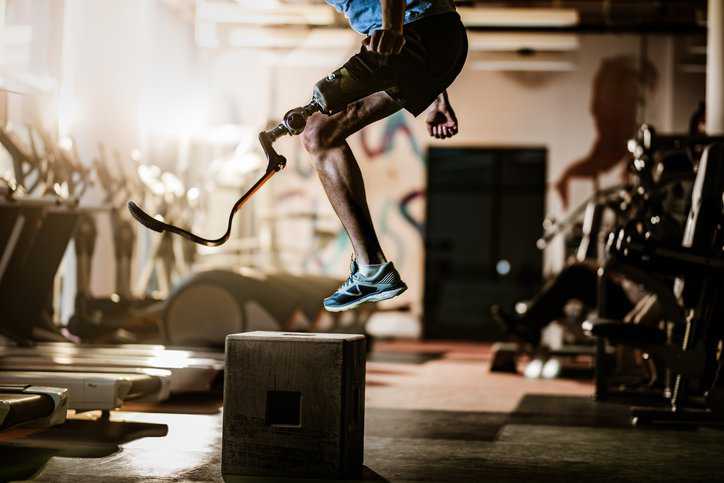An estimated 1.3 billion people experience significant disability—representing 16% of the world’s population, or 1 in 6 of us. Although today’s society is focusing more on physical activity, health, and wellness, there is still a significant lack of people with disabilities in fitness centers. This is an especially considerable problem because this group has a higher prevalence of illness and lifestyle diseases related to inactivity. Luckily, standards like ANSI/RESNA IF-1:2018— American National Standard For Inclusive Fitness – Volume 1: Inclusive Fitness Environments exist to describe the best practices of inclusive fitness environments.
Inclusive Fitness Environments
Inclusive fitness environments refer to welcoming and accessible spaces for people with disabilities to access equitable fitness opportunities. They also help educate non-disabled people about disability and reduce ableist prejudice and stereotypes. These spaces encompass accessible facilities, fitness equipment, and classes as well as welcoming staff and accessible marketing information.
Fitness center training appeals to a broad audience of people with disabilities because of the flexible hours, relatively easy access, and no requirements of one’s physical fitness ability nor specific physical skill (e.g., ball games). Despite this, people with disabilities are excluded and underrepresented in fitness centers. By providing opportunities where people of all abilities can feel valued and have fun, inclusive fitness environments aim to dismantle conditions of ableism and disablism in society.
What Is ANSI/RESNA IF-1?
ANSI/RESNA IF-1:2018 specifies best practices, existing regulations, standard specifications, and test methods for determining inclusive fitness facility accessibility. The word inclusive refers to “equal access to participation in desired activities for people with and without disabilities with appropriate modifications and supports.” This American National Standard also covers the existence of an inclusive fitness culture and approach to policy development, equipment procurement, staff training, programming, user interactions, and marketing. Moreover, ANSI/RESNA IF-1:2018 aims to reach more people in sport and physical activity through inclusive and accessible communications.
ANSI/RESNA IF-1:2018 does not apply to private or home fitness environments.
How to Create an Inclusive Group Fitness Environment
Inclusivity is imperative for the success of the fitness industry as whole because the more people feel welcomed and supported in the fitness community, the more likely they are to continue working towards their health and wellness goals. Here are some ways to create an inclusive group fitness environment:
- Create a welcoming and safe space for everyone
- Modify activities by cueing multiple variations of the same movement
- Establish clear goals and expectations
- Understand client motivations
- Offer a variety of classes for all levels
- Check in with class attendees to discuss injuries, disabilities, pregnancies, etc.
- Incorporate functional movement patterns
- Acknowledging diversity and representation
- Building a fitness space that is affordable and accessible to people of all income levels
- Have assistive equipment on hand
- Create exercise programming for unique physical and/or mental needs
- Seeking out and listening to the voices of underrepresented communities and consequently making an effort to address their specific needs and concerns
ANSI/RESNA IF-1:2018— American National Standard For Inclusive Fitness – Volume 1: Inclusive Fitness Environments is available on the ANSI Webstore.
